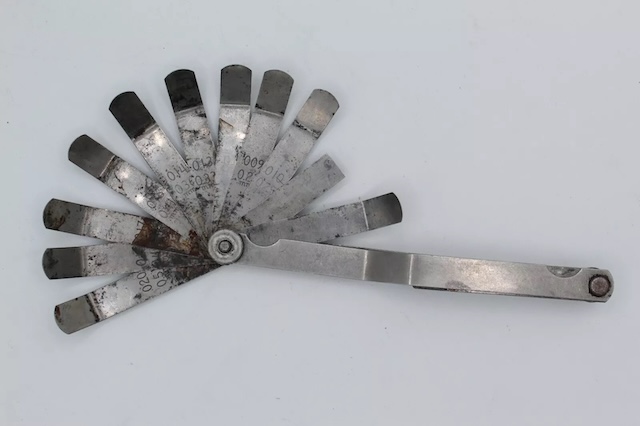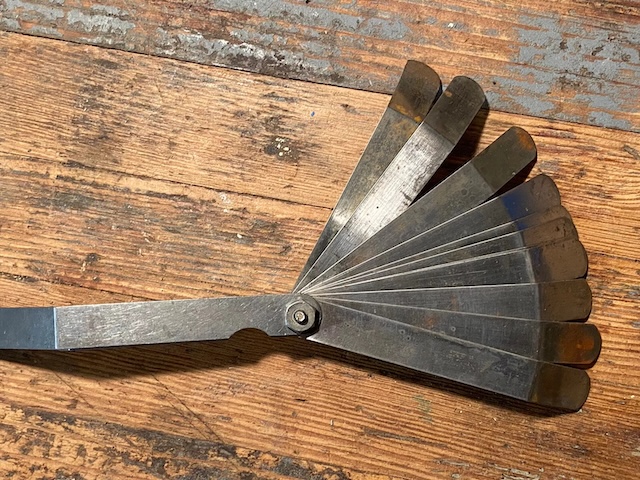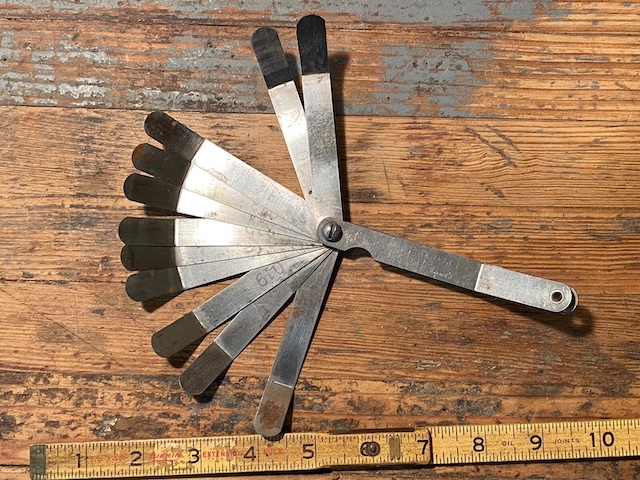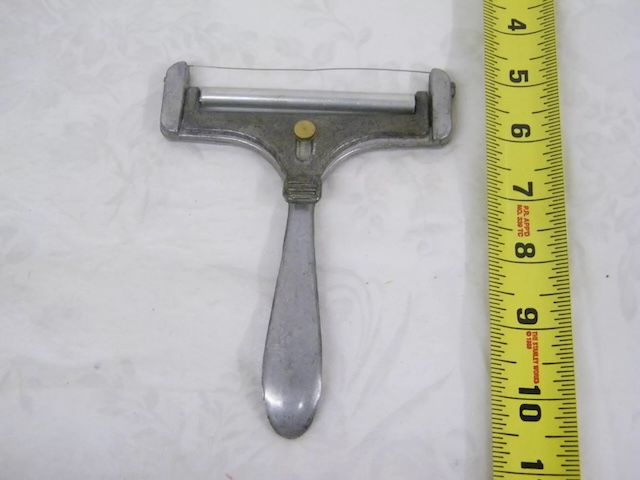From Past to Present: The Relevance of Feeler Gauges in Engineering
Feeler gauges are simple yet highly effective tools that have become indispensable in mechanical engineering, automotive repair, and manufacturing industries. Despite their unassuming appearance, they are key instruments used to measure gaps, clearances, and tolerances between machine parts. These small, precise tools have stood the test of time, remaining highly relevant in an age dominated by advanced digital tools. In this article, we will explore the history, design, functionality, and the ongoing importance of feeler gauges in ensuring precision in mechanical engineering.

The Evolution and Historical Significance of Feeler Gauges
Feeler gauges have a fascinating history that dates back to the early 20th century. As industrialization progressed and machinery became more complex, the need for precision tools grew. Engineers and mechanics needed a reliable way to measure small gaps and ensure that machine components fit together perfectly. Feeler gauges emerged as a solution to this challenge, allowing professionals to measure gaps with remarkable accuracy.
Initially, the use of feeler gauges was concentrated in industries such as automotive repair and mechanical engineering. Over time, these tools became a staple in virtually every professional toolkit. Their simple yet effective design made them a go-to solution for measuring clearances in tight spaces where more complex instruments would be impractical. Despite the rapid advancement of technology, the core design of feeler gauges has remained largely unchanged, a testament to their enduring utility and reliability.
The Critical Role of Feeler Gauges in Various Industries
Feeler gauges have become integral to industries where precision is essential. Their most common applications include automotive engineering, mechanical manufacturing, and general machinery maintenance. In the automotive industry, these tools are critical for ensuring the proper functioning of engine components. For example, feeler gauges are used to measure the gap between spark plugs, ensuring that the ignition system works correctly. Similarly, they help adjust valve clearances to optimize engine performance, preventing misalignments that could lead to inefficiency or engine damage.
In mechanical engineering, feeler gauges play a vital role in ensuring that machine parts are assembled with the correct tolerances. Even a small discrepancy in the gap between components can lead to malfunctions, reduced efficiency, or potentially catastrophic failures. Feeler gauges help prevent such issues by offering precise measurements that enable engineers to adjust gaps and clearances to exact specifications. These small but essential tools are the backbone of many industrial operations, ensuring that everything from automotive engines to large-scale manufacturing systems runs smoothly.

Understanding the Design and Functionality of Feeler Gauges
Feeler gauges may appear to be a simple tool, but their design is a masterclass in practicality and functionality. At their core, a feeler gauge consists of a set of thin metal blades, each with a different thickness. These blades are typically made of high-quality steel to ensure durability and resistance to wear, even with frequent use in demanding environments.
The gauge blades are clearly marked with their respective thicknesses, allowing for easy selection. To use a feeler gauge, a professional inserts the blade into a gap between two components. If the blade fits snugly, it matches the gap’s clearance. If the gap is too wide or too narrow, a different blade will be selected. This tactile feedback ensures that the user can easily determine the correct measurement without the need for complicated digital instruments. The simplicity of the design ensures that feeler gauges remain an indispensable tool, even in today’s high-tech world.

The Wide Range of Practical Applications for Feeler Gauges
Feeler gauges are versatile tools with applications across various industries. In the automotive sector, they are used for tasks like measuring spark plug gaps, adjusting valve clearances, and ensuring the correct alignment of engine components. These tasks are crucial for maintaining optimal engine performance and preventing issues that could compromise the vehicle’s functionality.
Beyond automotive applications, feeler gauges are also vital in the manufacturing and mechanical engineering industries. They are used to check the alignment and assembly of machine parts, ensuring that they meet precise specifications. Even a small deviation in gap width can lead to inefficiency, excessive wear, or operational failure. By ensuring the correct tolerances, feeler gauges help maintain the reliability and efficiency of machinery, from small-scale equipment to large industrial systems.

The Enduring Relevance and Legacy of Feeler Gauges in Modern Times
In today’s world, digital tools and advanced measurement systems are widely used, but feeler gauges continue to maintain their relevance in many industries. One of the main reasons for their enduring use is their simplicity and reliability. Unlike digital tools that require batteries, calibration, and training, feeler gauges are intuitive and always ready for use. Their tactile feedback allows users to make quick and accurate measurements, especially in tight or hard-to-reach spaces where digital devices might be cumbersome or impractical.
Furthermore, feeler gauges are affordable and don’t require ongoing maintenance or calibration. Their durability and simplicity make them a cost-effective choice for professionals across industries. Even as digital tools continue to advance, feeler gauges remain irreplaceable in many scenarios due to their unmatched reliability and ease of use.
Additionally, vintage feeler gauges have become prized by collectors and tool enthusiasts. These tools, often handcrafted with meticulous attention to detail, represent an era of simplicity and practicality in tool design. Their historical significance and craftsmanship continue to be appreciated by those who value precision instruments.

Conclusion: The Lasting Impact of Feeler Gauges on Precision Work
Feeler gauges may be simple tools, but their impact on precision work is immense. Over the years, they have become a cornerstone in industries that require exact measurements, such as automotive engineering and mechanical manufacturing. Their reliability, durability, and affordability have ensured their continued use, even in a world dominated by digital technologies.
Despite the rise of advanced digital tools, the tactile feedback and straightforward functionality of feeler gauges have allowed them to maintain their place as an essential tool for professionals. As industries continue to evolve, the enduring legacy of feeler gauges serves as a reminder of the importance of simplicity, durability, and precision in tool design.
Feeler gauges are more than just tools—they represent a lasting tradition of craftsmanship and precision in mechanical engineering. Their continued relevance is a testament to their unmatched functionality, proving that sometimes the simplest tools are the most effective.
Share this content:









Post Comment